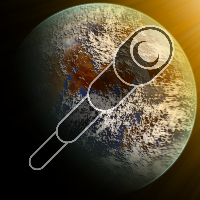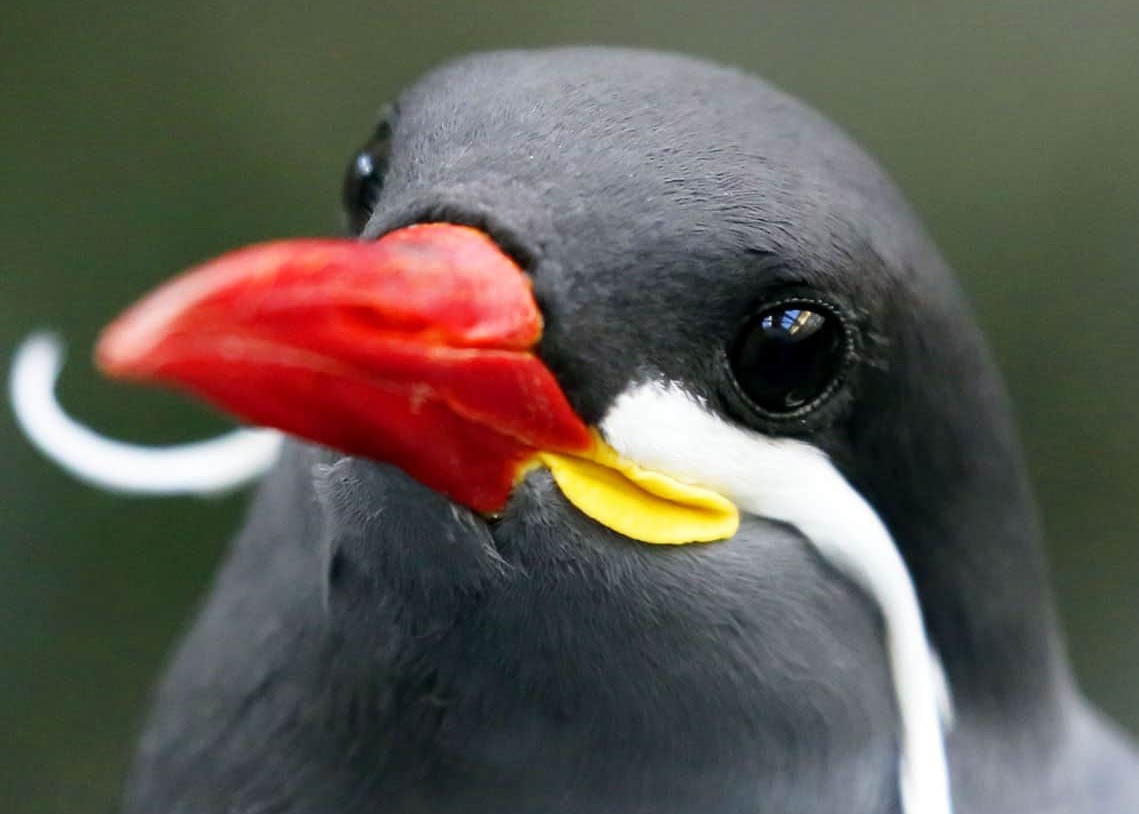Our Most Popular Shark Species
Sharks have an unfortunate reputation for being dangerous, bloodthirsty predators. Sharks are actually incredible creatures vital to countless ecosystems. They are characterised by five to seven gill slits, a cartilaginous skeleton, and pectoral fins that are not fused to the head.
We have over sixty million shark species, coming from tropical oceans, deep polar oceans, freshwater lakes and swamplands, and even molten rock oceans. Please get to know some of our species, and learn just how lovable some are!
Scientific Classification
Titan Sakara Shark
Planet: Osao
Scientific ClassificationKingdom: Animalia
Phylum: Chordata
Class: Chondrichthyes
Order: Squaliformes
Family: Somniosidae
Genus: Somniosus
Species: Somniosus sakara
The largest shark species from the biodiverse Osao, little is known about this species. They are a type of sleeper shark, commonly associated with benthic zones of planets. What we know about titan sakara sharks is our own research, as they are so elusive that the species is never encountered.
Despite their size, reaching sixty-five metres in length, titan sakara sharks are exclusive plankton and zooid feeders. Their slow swimming speeds and gigantic size means they do not need to eat as much, as they burn little energy.
Xiskian Mako
Planet: Xiskin
Scientific ClassificationKingdom: Animalia
Phylum: Chordata
Class: Chondrichthyes
Order: Lamniformes
Family: Lamnidae
Genus: Isurus
Species: Isurus oxyrhinchus xiskini
Given that an animal from Xiskin have appeared on all of our other Most Popular articles, it felt only rght to add xiskian makos. The fastest-swimming species on the planet, xiskin makos are a subspecies of shortfin mako. The only difference between terran shortfins and xiskian shortfins is their geographic location.
This type of evolution is not seen often, but when it does it raises the eyebrows or the scientific community. Our xiskian mako enclosure is in the central circle of the Tropical Oceans Sector 18, where it sits next to our terran shortfin makos.
Chrome Carpet Shark
Planet: Chromus
Scientific ClassificationKingdom: Animalia
Phylum: Chordata
Class: Chondrichthyes
Order: Orectolobiformes
Family: Laractidae
Genus: Laractis
Species: Laractis phenolphthus
Despite being the largest shark species from Chromus, chrome carpet sharks only measure a foot in length, including their long tail. These animals feast on paralarva and small invertebrates on the shallow coastal seabeds. They actively avoid other animal species, especially those larger them, regardless of their status in the food chain.
Come feed our chrome carpet sharks in the Coastal Waters Sector 6! Place your hand flat in the water while holding some food, and wait for the sharks to come nibble!
New Species!
Our brilliant researchers have discovered a new species of shark, named the golden spineshark. It was discovered on a tiny moon deep within the Milky Way.
Owl Shark
Moon: Umbriel (Uranus)
Scientific ClassificationKingdom: Animalia
Phylum: Chordata
Class: Chondrichthyes
Order: Carcharhiniformes
Family: Sphyrnidae
Genus: Eusphyra
Species: Eusphyra strigis
Owl sharks are famed for the ability to rotate their cephalophoil in every direction, similar to how owls can rotate their skulls almost 360 degreen. Native to the oceans of Umbriel, a moon orbiting Uranus, owl sharks are a very common species with a dangerous reputation.
Walk through a long tunnel underneath our multi-species exhibit to admire our owl sharks. If you stare at one for too long, it will begin to stare back, following you with its swivelling eyes until you're out of sight.
Cube Shark
Planet: Vanterr
Scientific ClassificationKingdom: Animalia
Phylum: Chordata
Class: Chondrichthyes
Order: Cubiniformes
Family: Cubinidae
Genus: Cubinis
Species: Cubinis vini
The absolute laughing-stock of the sharks, cube sharks are exactly what they sound like. Scientists cannot figure out how these animals evolved, and how they managed to out-compete other shark species. Tell us your theories on how these animals evolved!
You'll find these comical animals in the Open Oceans Sector 1, alongside cubic jellies. Those animals are a little more plausible.
Cave-Dwelling Shark
Planet: Gorhruhan
Scientific ClassificationKingdom: Animalia
Phylum: Chordata
Class: Chondrichthyes
Order: Carcharhiniformes
Family: Carcharhinidae
Genus: Carcharhinus
Species: Carcharhinus micaverna
The aptly named cave-dwelling shark is found deep in the caverns and cenotes of planet Gorhruhan. They grow to just a foot and a half in length, but pack a mean punch. These animals have blade-like teeth that they sharpen on the walls of these caves, used to shred their prey into tiny pieces.
For a small price, you can experience feeding our cave-dwelling sharks. We drop a small bucket of water into a large pit, and with our state-of-the-art cameras, you can watch the sharks destroy their food in seconds. Watch it in slow-mo!
Apex Predators
Sharks are often apex predators. They are skilled hunters that sit at the top of the food chain on most planets.
Aucherm Megamouth
Asteroid Belt: Aucherm Belt
Scientific ClassificationKingdom: Animalia
Phylum: Chordata
Class: Chondrichthyes
Order: Lamniformes
Family: Megachasmidae
Genus: Astromegachasma
Species: Astromegachasma aucherma
Aucherm megamouths are vital in maintaining the flow of astroplankton and astromagic in the Aucherm Belt. Their monolithic bodies have rows of slits, which pick up the plankton and spread it around space. They consume the same plankton, relying on space currents to keep moving.
We mimic the very same space currents in their enclosure, which is one of the largest in the Aucherm Belt Sector 2.. Due to its size and to save on expenses, the megamouth enclosure is mixed-species, with over seventeen other animals of ranging sizes.
Piranha Shark
Planet: Nieo
Scientific ClassificationKingdom: Animalia
Phylum: Chordata
Class: Chondrichthyes
Order: Lachariformes
Family: Lacharidae
Genus: Lacharis
Species: Lacharis serrasalma
Despite their namesake, you don't have to worry about piranha sharks. For one thing, nobody lives on planet Nieo. Secondly, piranha sharks are scavengers, so if they eat you, you are dead. They consume rotting flesh, enjoying a rare whalefall which brings in piranha sharks in their thousands.
Piranha sharks have mouths so small that from a glance, it appears that they don't have one. Their name comes from their swarming patterns whenever food is present.
Net Shark
Planet: Kyrophis
Scientific ClassificationKingdom: Animalia
Phylum: Chordata
Class: Chondrichthyes
Order: Lachariformes
Family: Scavelidae
Genus: Scandaes
Species: Scandaes sserafim
Net sharks are unusual in that they can produce a thin silk from a hole just below their tail fin. They use this silk to craft primitive nets, catching large prey such as small whales. The silk is consumed along with the prey item, and after eating an animal twice the size of these sharks, they go into a deep sleep for a couple months.
Legally we are not allowed to feed our sharks a whale, so we use whale meat, harvested from common coast whales, an overly abundant species from Oroe, a moon orbiting planet Khanaa.








I always love these articles. I think my favourite might be the cube sharks. Poor comical little buddies!
Explore Etrea | March of 31 Tales
I'm so glad you enjoy these articles, I make them with you in mind <3